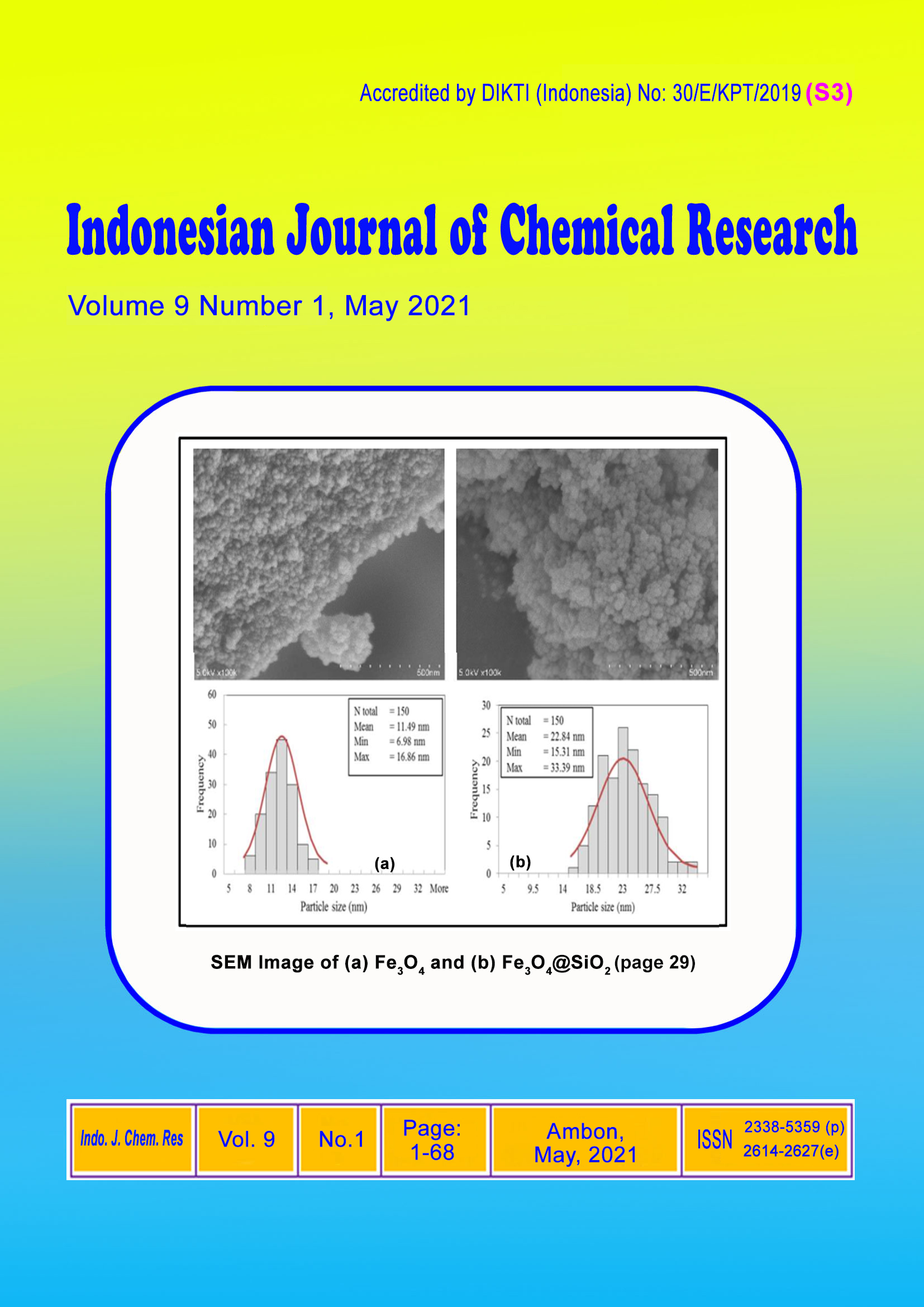Pyrolysis Reaction Kinetics of Styrofoam Plastic Waste
Abstract
Pyrolysis at the temperature range of 170 °C-237 °C against polystyrene (Styrofoam) type plastic waste is carried out without a catalyst and added a catalyst. The purpose of this research was to study the reaction kinetics of Styrofoam pyrolysis to liquid smoke products. Pyrolysis using a series of tools made of glass to observe the processes that occur in the reactor. The results showed that Styrofoam pyrolysis for liquid smoke products without catalyst and added catalyst took place in the first-order reaction. The kinetics of the pyrolysis reaction without a catalyst to observe the formation of liquid smoke products obtained by the equation of the reaction constant following the Arrhenius equation k = Ae2111.4 / T, with an activation energy value (Ea) of 17.554 x 103 kJ/mol and pyrolysis using a catalyst obtained k = Ae10330/T, with an activation energy value (Ea) of 85.883x103 kJ/mol. Using catalysts during pyrolysis will reduce the temperature so that the reaction will be slow.
Downloads
Copyright (c) 2021 Feybi A. G. Kauwo, I Dewa K. Anom, John Z. Lombok

This work is licensed under a Creative Commons Attribution-NonCommercial-NoDerivatives 4.0 International License.
Authors who publish with this journal agree to the following terms:
- Copyright on any article is retained by the author(s).
- The author grants the journal, the right of first publication with the work simultaneously licensed under a Creative Commons Attribution License that allows others to share the work with an acknowledgment of the work’s authorship and initial publication in this journal.
- Authors are able to enter into separate, additional contractual arrangements for the non-exclusive distribution of the journal’s published version of the work (e.g., post it to an institutional repository or publish it in a book), with an acknowledgment of its initial publication in this journal.
- Authors are permitted and encouraged to post their work online (e.g., in institutional repositories or on their website) prior to and during the submission process, as it can lead to productive exchanges, as well as earlier and greater citation of published work.
- The article and any associated published material is distributed under the Creative Commons Attribution-NonCommercial-NoDerivatives 4.0 International License.






_copy1.png)










